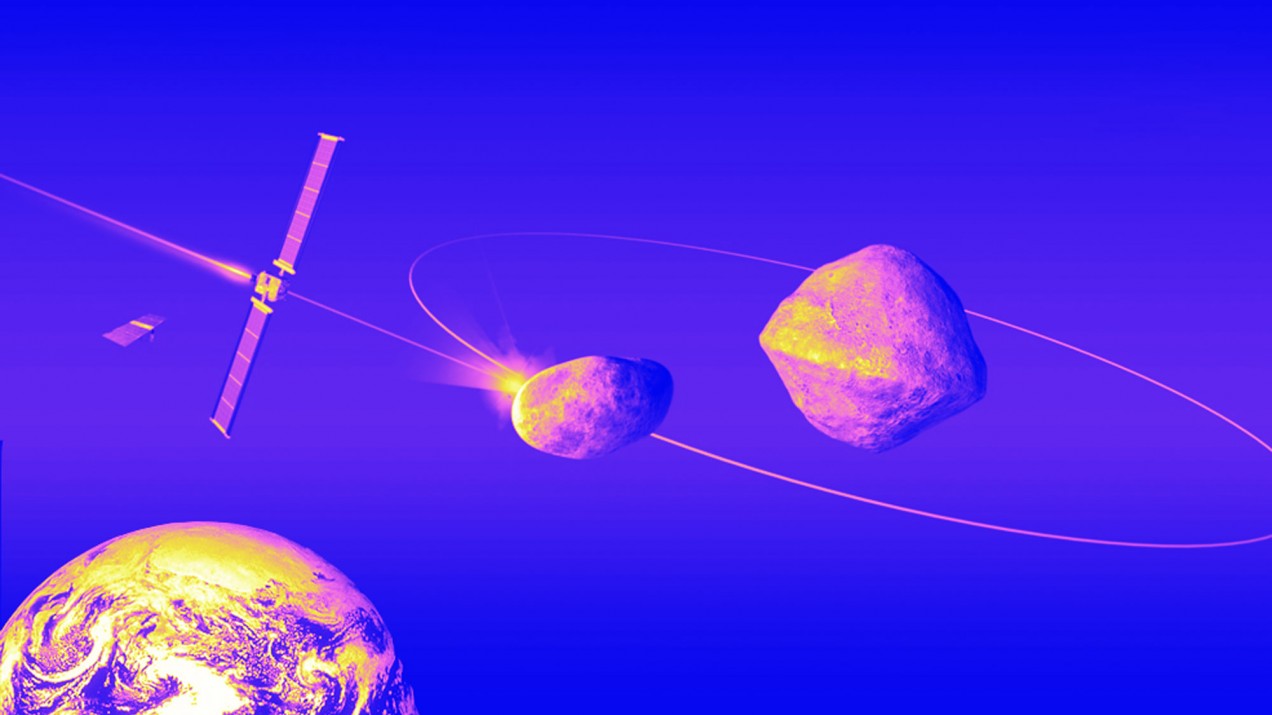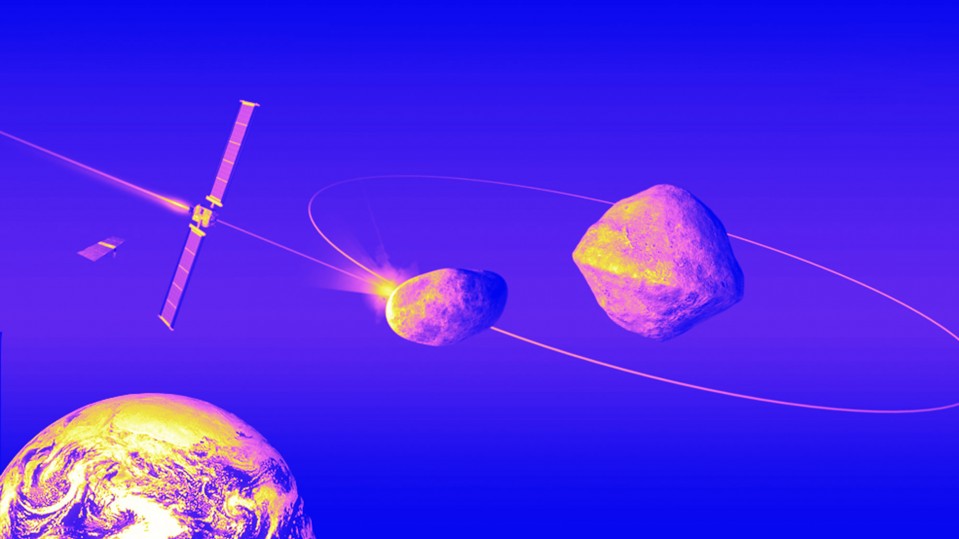

Space
We’re going to slam a spacecraft into an asteroid to try to deflect it
NASA and ESA want to know that if an asteroid were on a collision course with Earth, we could do something about it

An Earth-bound asteroid wouldn’t have to be huge to be a problem. Even something just a couple of hundred feet across could cause widespread devastation if it hit a town or city.
For the objects we can track (and plenty slip by without our realizing until too late), scientists estimate their trajectories and calculate the probability of a collision. We’ve been lucky so far, because we’ve not yet had to deal with a scenario where a space rock is on a crash course for Earth. If one were, we might have a shot at deflecting it onto a safer path—but we’ve never tried anything like that before.
That will soon change. Just last week, more than 130 scientists met in Rome to hash out more details about an informal collaboration between NASA and the European Space Agency (ESA) called AIDA, short for “asteroid impact and deflection assessment.” AIDA refers to a pair of missions designed to slam a spacecraft into a near-Earth asteroid and then study the impact to see how feasible it might be for humans to push an asteroid off its trajectory, should we ever need to.
“Today, we’re the first humans in history to have the technology to potentially deflect an asteroid from impacting the Earth,” says ESA’s Ian Carnelli. “The key question that remains to be answered is, are the technologies and models that we have good enough to actually work? Before you drive a car, you need to have an insurance policy. Well, AIDA is the insurance policy for planet Earth.”
It starts with NASA’s Double Asteroid Redirection Test (DART). A half-ton chunk of metal will launch in July 2021 and make its way toward 65803 Didymos, a binary asteroid (made up of one big asteroid orbited by a smaller “moonlet”). After 16 months, DART will arrive at Didymos and crash into the moonlet at more than 14,700 miles per hour.
The collision ought to be enough to change the orbit and velocity of the moonlet around the primary body by a fraction of a percent—a tiny amount, but measurable by Earth’s telescopes nonetheless. An Italian-made cubesat called LICIACube will separate from DART right before impact and take direct images of the collision. If it works, it will be the first time in history humans have physically changed the orbital trajectory of a space-based object.
DART will also be testing out a pair of novel spaceflight technologies. The first is a new solar electric propulsion system, called NASA Evolutionary Xenon Thruster-Commercial (NEXT-C). It’s based on a system first used on the Dawn mission launched over a decade ago, to study the protoplanets Vesta and Ceres. The second is Small-body Maneuvering Autonomous Real-Time Navigation (SMART Nav), a new algorithm for spacecraft guidance and navigation control. SMART Nav will be responsible for aiming DART at the moonlet.
“One of DART’s main challenges is to reliably target and squarely impact the small moonlet, 6.8 millions miles away from Earth,” says Nancy Chabot, a planetary scientist at Johns Hopkins University who is the coordination lead for DART. About an hour before impact, SMART Nav will identify the right asteroid of the two and then direct the spacecraft toward it.
Meanwhile, there’s Hera—ESA’s baby in the AIDA collaboration. Hera won’t launch until 2023, and won’t arrive at Didymos until five years later.
Hera includes two cubesats with their own propulsion systems, one of which will attempt to land on Didymos. The spacecraft will use a camera, lidar, and a thermal imager to make more observations of the impact crater’s shape and assess what happened to the asteroid after DART’s deflection attempt. Like DART, Hera utilizes an autonomous navigation system—in this case to independently assess what parts of the asteroid are worth imaging and studying, and to figure out how to get to those areas.
None of this would be possible if Didymos didn’t uniquely check a ton of boxes. “It is not on a path to collide with Earth, and therefore poses no current threat to the planet, but its binary nature enables DART’s kinetic impactor demonstration,” says Chabot. Since the moonlet is already orbiting another object, we have a more controlled scenario from which to measure how much DART’s impact affects the moonlet’s orbit. Moreover, that orbit, passing both in front of and behind the primary body, also gives Earth’s ground telescopes an opportunity to study the impact from the best perspectives.
NASA, ESA, and their partners are making progress. Both Carnelli and Chabot believe the workshop was a great success, especially when it comes to navigation challenges and forming a strategy for allowing Hera to image the DART crater (which we now believe could be much bigger than previous estimates suggested).
“Planetary defense is really a worldwide endeavor,” says Carnelli. “Besides just the technology and the science, AIDA is also a really good experiment in terms of collaboration between scientists and agencies around the world. It’s the sort of thing that would be needed were an asteroid on a collision course for Earth.”